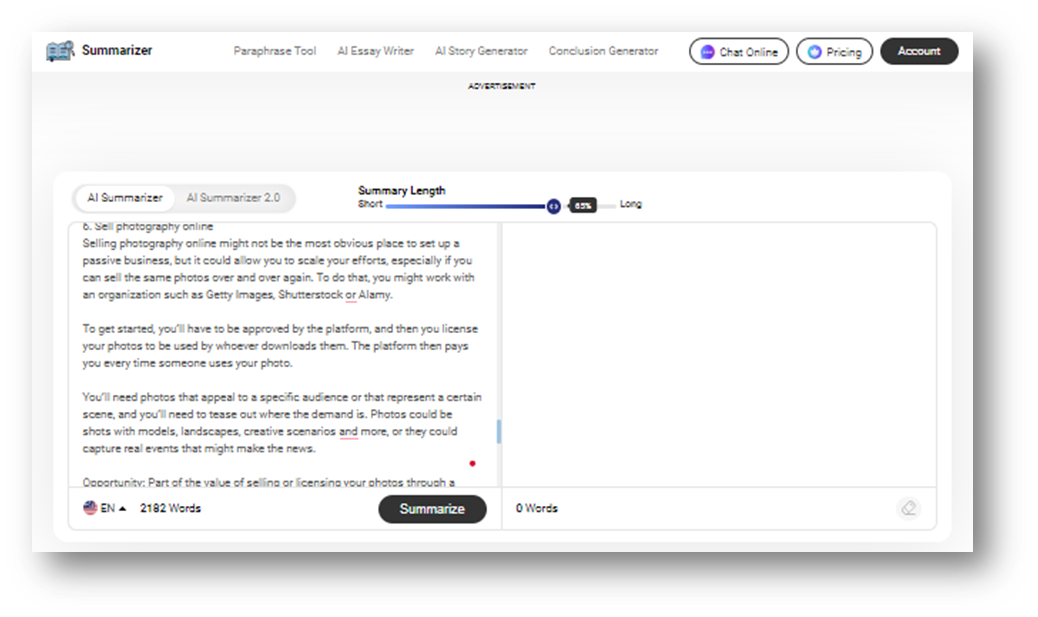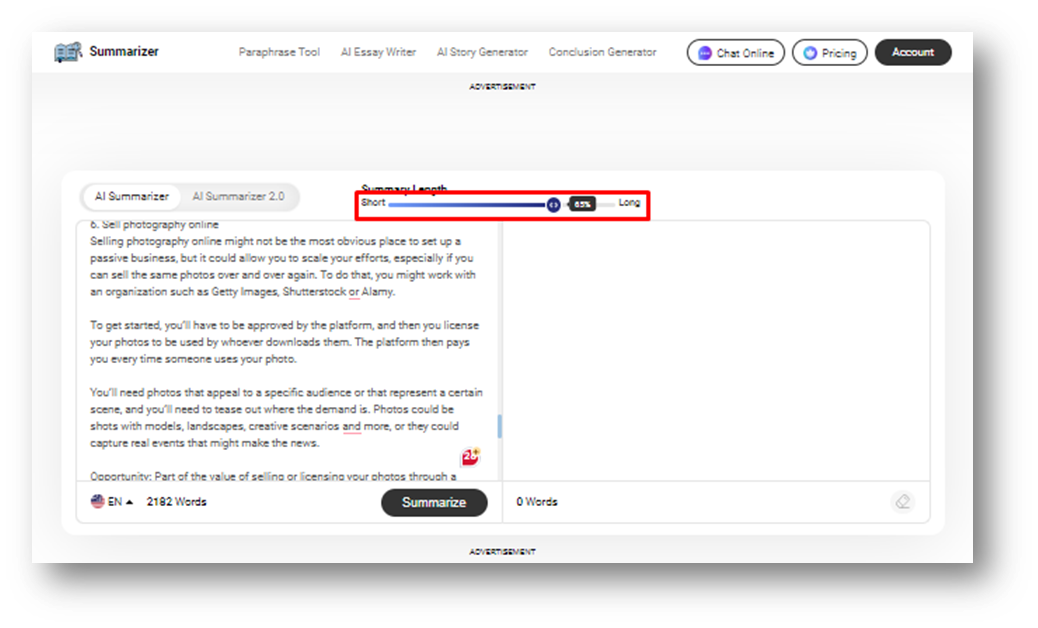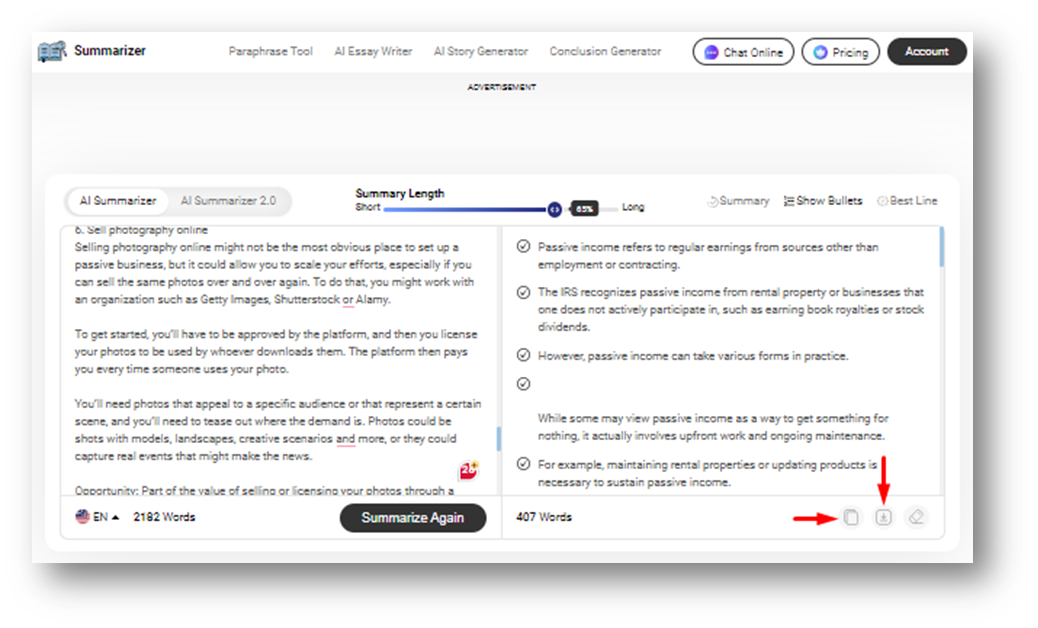Have you ever been in a situation where you had to make a summary of a long-form text? If so, you already know that doing it manually can take several hours. To counter this and save time, summarizing your text using machine learning models can be a great way.
These machine-learning models are often incorporated into summarizing tools. Such a tool works on advanced technologies and language models to generate a short, concise, and relevant summary of your text. Additionally, machine learning can also train these Summarizing tools to identify the most important parts of a paper and extract key facts and information from it.
This makes it important for you to know about these tools if you’re someone who has to actively create summaries. For that, I will explain how you can summarize text using machine learning and save time in this post.
How to Automate Text Summarization?
Automating your text summarization can be done by using an AI text summarizer that provides efficient results and a high-quality summary. As we’ve mentioned earlier, such tools use AI and machine learning models to function. There are two types of summaries can be generated by these tools and those are:
- Extractive summaries
- Abstractive summaries
By using advanced technologies such as machine learning (ML) and natural language processing (NLP), an AI text summarizer generates an effective summary without changing its context.
Here’s how you can create summaries using an AI summarizing tool. For the demonstrations, we’re using a tool which is known as Summarizer.
Step 01: Copy And Paste The Text You Want To Summarize To The Tool
The first thing that you have to do when using such a Summarizing tool is copy and paste the text that you want the summary for in its input box. Many AI summarizing tools also allow users to simply upload an entire document for summarization, directly from their device’s storage.

Step 02: Adjust The Length Of The Summary You Want
The next thing that you have to do is adjust the summary’s length. This will help you generate a summary based on your length preferences.
Please note that this feature might not be available in every summarizing tool. It is, however, available in the one we’re using for this demo, which is why we added this step.

Step 03: Copy Or Download The Generated Summary
Once you’ve completed the steps we mentioned above, all you have to do is click on the “Summarize” button and your summary will be generated.
After this is done, you can copy and paste it wherever you like or download the summary in a text file by using the buttons present at the bottom of the output box.

It only took less than 20 seconds to generate a summary of 900 words in the above example. But, If I did the same thing manually, it could have taken me around one hour. There would also be chances of errors as human error can occur anytime.
That said, below I have explained further about the two types of summaries that machine learning models can generate in automated text summarization.
1. Extractive Summary
Extractive summarization methods work in a very simple. In this procedure, the algorithm extracts the important parts of the information and combines them in a well-written format without adding new sentences and phrases to it.
The only problem that occurs with the tool in this type of summarization is that the tool is limited to one thing which is cutting the length of sentences and highlighting the important words.
In simple words, it just rephrases the same sentences that you want to summarize by modifying the original text.
At this point using the abstractive summarization method is much better compared to extractive, and I have explained further the reason behind this.
|
Here’s an example of extractive summarization! Source Text: Sara and Elizabeth, attend their doctor appointment in the city. During their session, Sara collapsed and was later admitted to the hospital. Summary: Sara and Elizabeth, attended their appointment in the city, During the session Sara was admitted to the hospital. |
2. Abstractive Summarization
The abstractive summarization method is more accurate and efficient than the previous one. In this method, machine learning models create new sentences to explain the key concepts from the original text.
These new sentences aim to create a concise version of the original text without changing its actual meaning.
|
Here’s an example of how well you can summarize your text with this machine-learning model! Source Text: Sara and Elizabeth, attend their doctor appointment in the city. During their session, Sara collapsed and was later admitted to the hospital. Summary: Sara was hospitalized after attending her appointment with Elizabeth in the city. |
The machine learning models that are trained on this method fall into two of the following categories:
- Techniques that use sentence adjustment - fall into Extractive Summarization
- Techniques that use sentence generation - fall into Abstractive Summarization
You can generate any of the two types of summaries that you want using an AI summarizing tool that utilizes machine learning models.
Final Words
Summarizing your text using AI tools has improved efficiency and accuracy. In this post, we’ve talked about how you can summarize your text using artificial intelligence and machine learning models rather than manually doing it. We’ve also discussed the types of summaries that such tools can generate and how they generate them.








